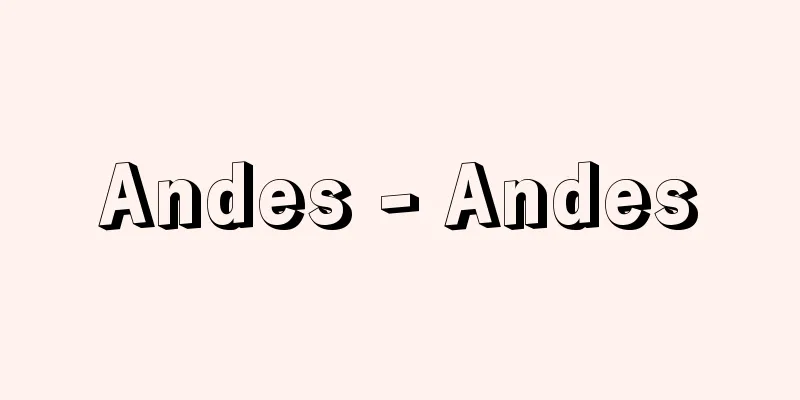Development

|
It refers to the process of converting an invisible image, i.e. a latent image, created on film or photographic paper by exposure or other methods into a visible image. There are chemical and physical development methods, but the latter is rarely used today. Generally, development refers to the entire process of development, but in the narrow sense it refers only to the development process during the process. Film taken with an ordinary camera contains an image that cannot be seen with the naked eye, that is, a latent image, which, in the case of silver halide, is thought to be made up of a few or more silver atoms. Chemical development is a method in which the silver halide that forms the latent image is reduced using a solution containing a reducing agent (developing agent), causing metallic silver to precipitate and create a visible image. It is the most common development method today. Physical development is a method of creating a visible image by precipitating metallic silver onto a latent image from a solution containing a soluble silver salt and a reducing agent; a positive image is formed using this method on the monochrome film used in instant cameras. [Poetry by Ito] Black and white film developmentThe development process generally follows the steps of development → fixing → washing → drying. When exposed film is developed, black metallic silver is precipitated in proportion to the amount of light it was exposed to, forming an image. This creates a so-called negative image that is the exact opposite of the brightness and darkness of the subject. After an image has been developed, excess undeveloped silver halide remains in the parts of the film that were not exposed to light or in areas with low light, so fixing is carried out to remove this. If film is dried as is after development and fixing, the fixing agent remaining on the film surface will cause discoloration and make it unsuitable for storage, so the film is washed with water before drying. A developer is a solution whose main ingredient is metol, hydroquinone, or phenidone, and is a mixture of other ingredients such as preservatives (such as sodium sulfite) that prevent the main ingredient from oxidizing, accelerators (sodium carbonate, borax, sodium metaborate, etc.) that make the solution alkaline and activate the action, and inhibitors (such as potassium bromide) that have the opposite effect. The most common and well-known developer for black-and-white film is the formula "D-76," announced by Kodak of the United States in 1926. Fixing solutions are usually acidic mixtures of fixing agents (sodium thiosulfate or ammonium thiosulfate) that dissolve and remove silver halide, preservatives that prevent the decomposition of the fixing agents, acid agents (acetic acid), buffers (boric acid, sodium metaborate, etc.), hardeners (potassium alum, etc.), etc. Since developing solutions are weakly alkaline, they are usually neutralized with a stop solution (1.5% acetic acid solution) before fixing. [Poetry by Ito] Development characteristicsThe way negatives are finished varies depending on the formulation of the developer, but when the formulation is constant, the developer temperature, development time, and degree of agitation can make the image darker or lighter, and the contrast (high contrast between light and dark is called hard contrast, and low contrast is called soft contrast) can also be made stronger or weaker. This principle can also be applied to increase the practical sensitivity of film. Therefore, in order to obtain a film with the optimum density and contrast for enlargement, it is necessary to control the temperature, development time, and degree of agitation. The developer that has penetrated into the emulsion reduces the silver halide exposed to light to produce metallic silver, but at the same time, the developer itself oxidizes and loses its developing ability, so it is necessary to agitate (by mixing methods such as moving the film or moving the developer) so that the film surface is constantly exposed to new developer and the oxidized developer in the emulsion is replaced with new developer. [Poetry by Ito] The actual developmentThe chemicals used for development can be prepared according to a recipe, but it is generally easier to use ready-made compounds. To develop film, flat trays, small developing tanks, large developing tanks, etc. are used, but small developing tanks are widely used because it is relatively easy to adjust the development temperature, time, and agitation. Below are some points to check when developing. (1) Adequacy of density and contrast If you take a picture with a modern AE (automatic exposure) camera with the correct sensitivity and develop it as specified, you should be able to obtain a standard negative. Therefore, if the negative is of poor quality, check to see if the development temperature and time were correct. (2) Presence or absence of scratches on the film surface Most scratches on film are caused by scrapes caused by sand or other debris that gets stuck on the sponge when wiping the film. (3) Presence or absence of uneven development If films are overlapped during development, if air bubbles are left on the film surface, or if the film is not stirred properly, the areas that should be developed at a constant density will not be uniform, and clouds, bands, or circular areas of different densities will appear on the screen. If unevenness occurs, the image will be destroyed, so it is important to use a small developing tank that is structurally designed to be less prone to uneven development. Other types of monochrome film include instant camera film, which is developed inside the camera using a physical development process. There are also special films that are developed simply by heating and fixed by leaving them to cool, and are used for microfilm duplication. Although not used much these days, there is also a development method that uses the "reversal development method" that is applied to the development of color reversal film to directly create monochrome positive film. The development of monochrome photographic paper is basically the same as that of monochrome film, but there are some differences in the amounts of chemicals used in the developer. [Poetry by Ito] Color photosensitive material developmentThe basic process of developing color photosensitive materials is to reduce the silver halide exposed to light in the emulsion to produce metallic silver, which creates a silver image, and then to perform color development to create a color image proportional to the silver image, after which unnecessary silver images and silver halide are bleached and fixed, leaving only the color image. Color development refers to the process in which the oxide of the color developing agent that reduced the exposed silver halide reacts with the coupler in the emulsion (internal type) or in the developer (external type) to produce a dye and form a color image. As a color developing agent, sulfates of paraphenylenediamine derivatives (diethylparaben, etc.) are used. Bleaching refers to the process of returning the metallic silver that forms the silver image to silver halide, and EDTA (ethylenediaminetetraacetic acid) iron chelate is mainly used as the main bleaching agent. Color photosensitive materials are usually developed by a color lab that specializes in this process. The process is particularly complicated for external color film, so it cannot be processed at any other than a specific developing lab. Except for special cases, internal color photosensitive materials (such as color negative film) can be processed with developers of the same formula. These formulas have not been published, but ready-made preparations are available on the market, making it possible to develop at home. To maintain color balance, the allowable processing temperature range and time are strictly regulated, but the development method is basically the same as for monochrome. When color negative film is developed, the couplers in each emulsion layer develop into color negatives, so the process is color development → bleaching → washing → fixing → washing → stabilization → drying. The color negative image is formed on a magenta base. In the development of internal color reversal film, couplers are added to develop the complementary color of the color light to which it is exposed (the color of the color negative film), so if you first develop it as a black-and-white negative, then chemically fog (reverse) the undeveloped emulsion with a chemical solution and then develop it in color, a positive silver image will be produced and at the same time a positive color image of the same color as the subject will be produced. The process is as follows: black-and-white negative development (also called first development) → inversion → color development → conditioner → bleach → fixing → washing → stabilization → drying. Positive-positive color paper is developed in the same way as color reversal film, and negative-positive color paper can be processed in the following order to obtain a positive print: color development → bleach-fix (bleaching and fixing are performed simultaneously) → washing → drying. Because external color reversal film does not contain couplers in the emulsion, the three layers must be developed separately using three types of color developers that contain couplers, and the development process involves a complex process: black-and-white negative development → red light reversal exposure → cyan color development → blue light reversal exposure → yellow color development → white light exposure or reversal bath → magenta color development → bleaching → fixing → washing → stabilizing → drying. [Poetry by Ito] [Reference] |Source: Shogakukan Encyclopedia Nipponica About Encyclopedia Nipponica Information | Legend |
|
露光その他の方法によってフィルムや印画紙の上に生じた目に見えない像、つまり潜像を可視像に変えることをいい、化学現像法、物理現像法などあるが、今日、後者で処理されることはまれである。一般に現像という場合は、現像の全行程をさすが、狭義には行程中の現像処理のみをいう。 普通のカメラで撮影したフィルムには肉眼で見ることのできない像、つまり潜像ができているが、これはハロゲン化銀の場合、数個以上の銀原子でつくられていると考えられている。 化学現像法は、還元剤(現像主薬)を含む溶液により、潜像を形成するハロゲン化銀を還元し、金属銀を析出させて可視像をつくらせる方法で、今日の一般的な現像法である。 物理現像法は、可溶性銀塩と還元剤を含む溶液から潜像上に金属銀を析出させて可視像をつくる方法をいい、インスタント・カメラのモノクロフィルムはこの方法でポジ像が形成される。 [伊藤詩唱] モノクロフィルムの現像現像の行程は一般に、現像→定着→水洗→乾燥の手順で行われる。撮影済みのフィルムを現像すると、光の当たった量に比例して黒色の金属銀を析出し、画像が形成される。したがって被写体の明暗とは正反対のいわゆるネガ像ができる。現像によって画像ができたフィルムの、光の当たらなかった部分や光の弱かった部分には、現像されなかった余分のハロゲン化銀が残っているので、これを除去するために定着を行う。現像や定着が終わったフィルムをそのまま乾燥すると、膜面に残っている定着剤などのために変色し保存に耐えないので、フィルムを水洗してから乾燥する。 現像液は、メトール、ハイドロキノン、フェニドンなどを主薬とする溶液で、そのほか主薬の酸化するのを防ぐ保恒剤(亜硫酸ソーダなど)、溶液をアルカリ性にして作用を活発化させる促進剤(炭酸ソーダ、ホウ砂、メタホウ酸ソーダなど)、その反対の作用をする抑制剤(ブロムカリなど)などの混合溶液である。 モノクロフィルム用現像液では、1926年アメリカのコダック社が発表した処方「D‐76」が、もっとも一般的で有名である。 定着液は、ハロゲン化銀を溶解除去する定着主剤(チオ硫酸ナトリウムまたはチオ硫酸アンモニウム)、主剤の分解を防止する保恒剤、酸剤(酢酸)、緩衝剤(ホウ酸、メタホウ酸ナトリウムなど)、硬膜剤(カリミョウバンなど)などの混合溶液で、通常は酸性である。現像液は弱アルカリ性なので、停止液(1.5%酢酸液)を使って中和後、定着を行うのが普通である。 [伊藤詩唱] 現像の特性現像液の処方によって、ネガの仕上り方は変化するが、処方が一定の場合には現像液の温度、現像時間、攪拌(かくはん)の度合いに応じて濃くも薄くもなり、コントラスト(明暗の対比の大きいものを硬調、小さいものを軟調という)も強くなったり弱くなったりする。この原理を応用して、実用的なフィルム感度を増大させることもできる。したがって、引伸しなどをするために最適の濃度とコントラストのフィルムを得るために、温度、現像時間、攪拌の度合いなどをコントロールする必要がある。乳剤中に浸透した現像液は、光を受けたハロゲン化銀を還元し、金属銀を生成させるが、同時に、現像液自身は酸化し現像能力を失うため、攪拌すること(フィルムを動かす、現像液を動かすなどの混合法)により、フィルム面に絶えず新しい現像液を触れさせ、乳剤中の酸化した液と新しい液とを交換させる必要がある。 [伊藤詩唱] 現像の実際現像に使用される薬液は、処方に従って調製することもできるが、一般には既製調合薬を使用するのが簡便である。フィルムを現像するには、平皿(バット)、小型現像タンク、大型現像タンクなどを使用するが、現像温度、時間、攪拌の調節が比較的容易にできる小型現像タンクが広く採用されている。 以下に、現像に際してのチェックポイントを列挙する。 (1)濃度やコントラストの適否について 最近のAE(自動露出)カメラで正しく感度をあわせて撮影し、指定されたとおりに現像処理すれば標準的なネガが得られるはずである。したがって、ネガが不良な場合は、現像温度と時間の間違いがなかったかをチェックする。 (2)フィルム面の傷の有無 フィルムに傷がつくのは、ほとんどが、フィルムを拭(ふ)くときのスポンジに付着した砂などのごみによる擦り傷である。 (3)現像むらの有無 現像中にフィルムが重なっていたり、フィルム面に気泡をつけたままにしたり、攪拌が不適当であったりすると、一定の濃度で現像されなければならない部分が不均一となり、画面に雲状や帯状、または円形の濃度の違う部分ができる。むらが発生すると、画像が破壊されてしまうので、小型現像タンクでは構造的にむらの出にくいタイプを使用することがたいせつである。 その他のモノクロフィルムとしてインスタント・カメラ用フィルムがあるが、これらは物理現像法により、カメラの内部で行われる。また特殊なフィルムとして、単に加熱するだけで現像され、放置冷却することにより定着する、マイクロフィルムの複製などに使用されるものもある。現在はあまり使用されなくなったが、カラーリバーサルフィルムの現像法に応用されている「反転現像法」を行い、直接モノクロポジフィルムをつくる現像法もある。 モノクロ印画紙の現像は、基本的にはモノクロフィルムの現像法と同じであるが、現像液の薬品の配合量などが多少異なる。 [伊藤詩唱] カラー感光材料の現像カラー感光材料の現像は、乳剤中の感光したハロゲン化銀を還元し金属銀を生成させ、銀画像をつくらせるとともに、銀画像に比例した色画像をつくらせる発色現像を行ったのち、不必要な銀画像やハロゲン化銀を漂白・定着し色画像だけを残すのが基本の工程である。発色現像は、感光したハロゲン化銀を還元した発色現像主薬の酸化物が、乳剤中(内型)または現像液中(外型)のカプラーと反応して色素を生成し、色画像を形成することをいう。発色現像主薬としては、パラフェニレンジアミン誘導体(ジエチルパラミンなど)の硫酸塩などが使用される。漂白は、銀画像を形成する金属銀をハロゲン化銀に戻すことをいい、漂白主剤としてEDTA(エチレンジアミンテトラ酢酸)鉄キレートが主として使用されている。カラー感光材料の現像は、この処理を専業としているカラーラボに依頼するのが普通である。とくに外型カラーフィルムはその工程が複雑なので、特定の現像所以外では処理できない。内型カラー感光材料(カラーネガフィルムなど)は、特殊なものを除き、同一の処方による現像液で処理することができる。これらの処方は発表されていないが、既製調合薬が市販されているので自家現像が可能である。またカラーバランスを保つために、処理温度の許容範囲と時間が厳しく定められているが、基本的にはモノクロの現像法と変わるところはない。 カラーネガフィルムの現像は、撮影したカラーネガフィルムを発色現像すると、各乳剤層のカプラーはカラーネガに発色するので、発色現像→漂白→水洗→定着→水洗→安定→乾燥の手順で処理する。カラーネガ像はマゼンタベース上にできる。 内型カラーリバーサルフィルムの現像は、感光する色光の補色(カラーネガフィルムの色)に発色するようカプラーが加えられているので、まず黒白ネガに現像し、未現像の乳剤を薬液により化学的にかぶらせ(反転させ)てから発色現像すると、ポジの銀画像ができると同時に、被写体と同じ色のポジの色画像ができる。手順は、黒白ネガ現像(第一現像ともいう)→反転→発色現像→コンディショナー→漂白→定着→水洗→安定→乾燥と処理される。 ポジ・ポジタイプのカラーペーパーの現像は、カラーリバーサルフィルムと同様に処理する。またネガ・ポジタイプのカラーペーパーは、発色現像→漂白定着(漂白と定着を同時に行う)→水洗→乾燥の順に行って、ポジのプリントを得ることができる。 外型カラーリバーサルフィルムの現像は、乳剤中にカプラーを含まないため、カプラーを含む3種の発色現像液で3層を別々に発色させなければならず、黒白ネガ現像→赤色光反転露光→シアン発色現像→青色光反転露光→イエロー発色現像→白光露光あるいは反転浴→マゼンタ発色現像→漂白→定着→水洗→安定→乾燥と複雑な手順で行われる。 [伊藤詩唱] [参照項目] |出典 小学館 日本大百科全書(ニッポニカ)日本大百科全書(ニッポニカ)について 情報 | 凡例 |
Recommend
Salvador (English spelling)
The capital of Bahia State, located on the central...
Felis lynx canadensis (English spelling) Felislynxcanadensis
…[Yoshinori Imaizumi]. … *Some of the terminology...
Toothpaste sales - hamigauri
In the early modern period, toothpaste was sold at...
Kikyouhara - Kikyouhara
...Located in the southern part of the Tokamachi ...
Anthem (English spelling)
Since the mid-16th century, choral music has been ...
Blood blister - Chimame
A pea-sized hemorrhage that occurs under the skin ...
Jaquet-Droze and his son - Jaquet-Droze
A father and son duo known for making automata in ...
Wu Zhen - Gochin
An independent literati painter from the Yuan Dyn...
Yun Baek Nam
...This was a kind of heroic play, a political no...
Dracaena concinna (English spelling) Dracaena concinna
… [Takabayashi Masatoshi]. … *Some of the termino...
Dazai - Dazai
(In the past, it was also called "dasai"...
Eragrostis japonica (English spelling) Eragrostis japonica
…[Tetsuo Koyama]. … *Some of the terminology that...
Kentish
…OE is divided into four dialects according to th...
Osaka Electric Tramway
…Following the government-run railway between Kyo...
Ashi - Ashi (English spelling) Common reed
A large perennial grass of the Poaceae family (AP...









